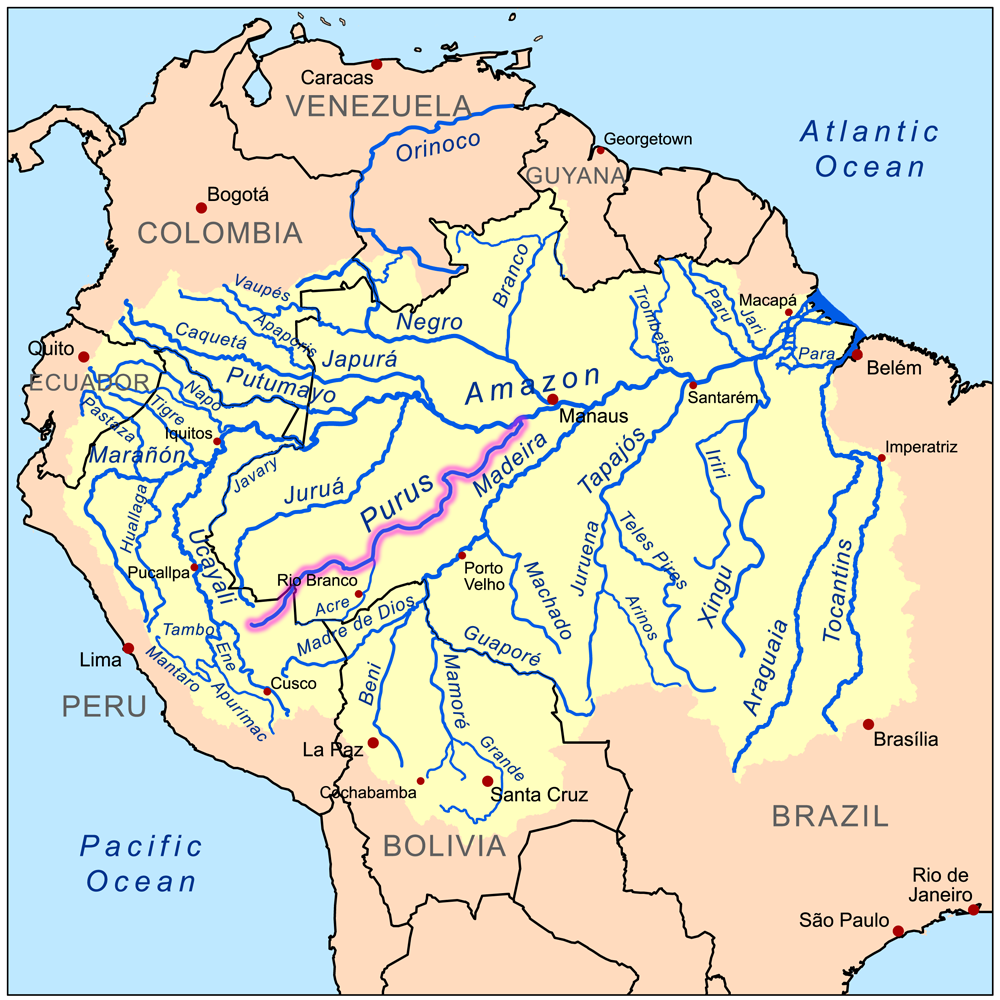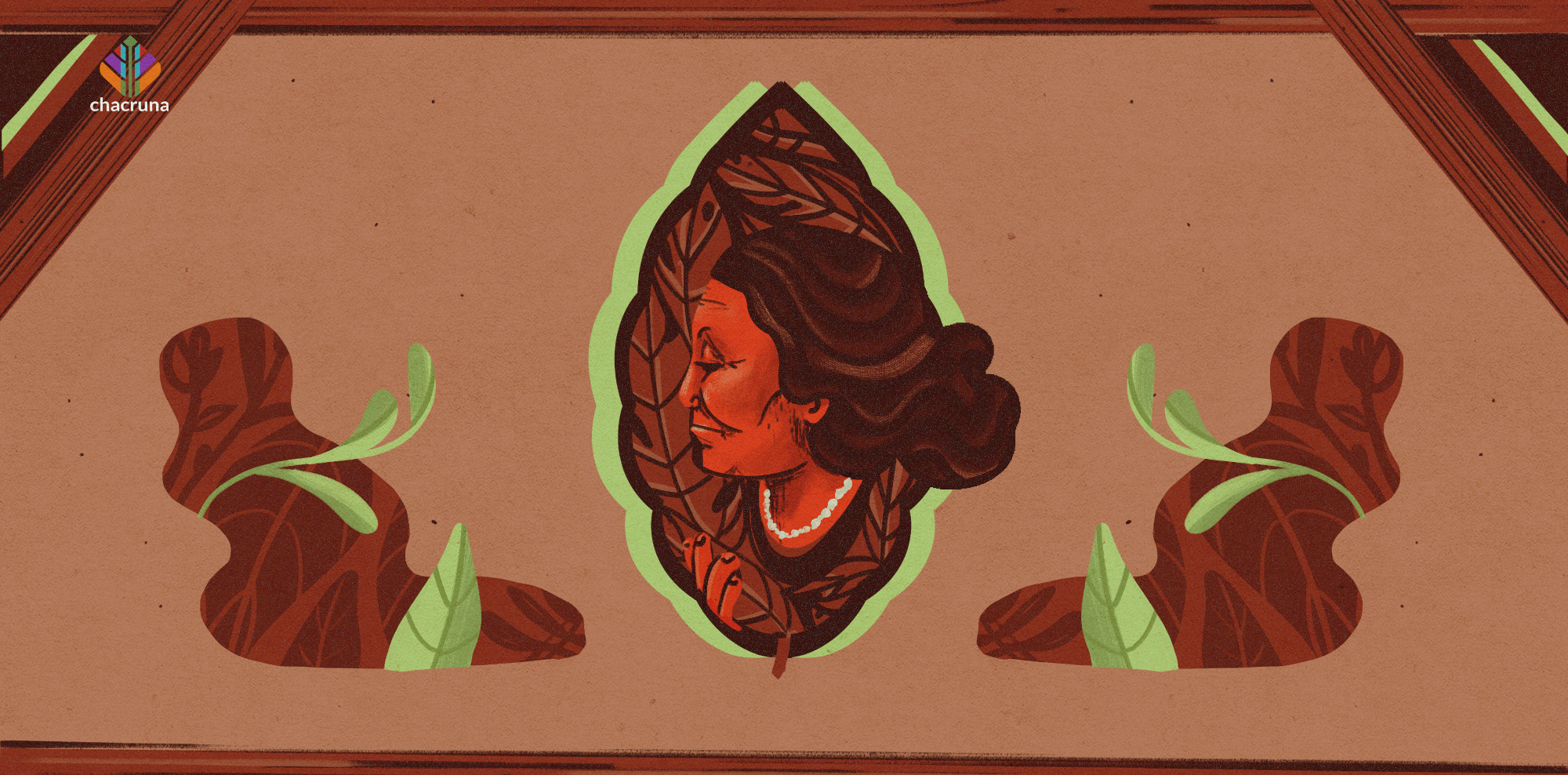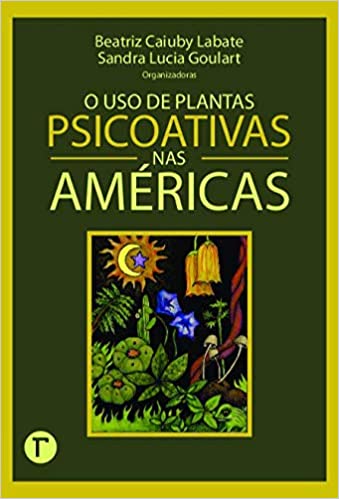- Treasures of the Forest: Jarawara Women and Plants They Carry - January 19, 2022

For the Jarawara, if snuff is an issue to be thought about, a conceptual question, it is so because it is something that women care for. Snuff belongs to women: they are its main connoisseurs; they are the ones who devote themselves to making, having, and “taking” (as the Jarawara say in Portuguese) this little “treasure” from the village’s daily life that is snuff—here called sinã.
This text is based on my ethnography of the Jarawara people, whom I first met in 2004, at the Casa Nova village, near the middle course of the Purus River in the southwestern Amazon, and we have been in dialogue since then.

If I could describe, translate in a certain way, the world in which the Jarawara people live, I certainly would have to begin with the ideas of taking (towaka), going (toka), returning (kama), seeking (waka), bringing (kaki), carrying (weye), catching (wata), and holding (tama). As in other Amerindian societies, all these “verbs of movement” denote fundamental concepts of a system of action that daily—and often slowly—mark people’s lives and activities. Everything, or almost everything, is carried, or rather, must be carried from one place to another. It is as if for the Jarawara, things—just because they are things—must be in constant motion: many species of plants are cultivated close to the houses and then transplanted into the gardens; the plants cultivated in the gardens, such as manioc, cassava, yams, and bananas, are carried back to the houses to be consumed; the prey (bani), the hunted animals, are carried dead to the village, to be cooked as well as the fish, caught in inlets and lakes; small children are carried in slings during walks; firewood is brought from the forest to make fire near the houses; the cassava flour, produced in the ovens, is taken back to the houses. So great an amount of things are carried and taken that it would be exhausting to list them all here, but just remembering some last ones: the engine, the boat, the generator, the gas cylinder, the stove itself, the keyboard for the party, the firewood, clay, etc. . . . And so on, infinitely, people’s daily lives are woven by the comings and goings of things.
“As in other Amerindian societies, all these “verbs of movement” denote fundamental concepts of a system of action that daily—and often slowly—mark people’s lives and activities.”
In these displacements, carrying and taking are central. Perhaps the paneiro (isiri)—a basket of vine titica (tama), braided in different sizes, carried on the back, with the main support given by a band of envira plant that rests on the forehead—is the most important object on these comings and goings. The paneiro allows things, all kinds of things, of all sizes and weights, to be taken, carried.
The ideas of going, returning, taking, carrying, are informed by another existential idea which is “wanting,” “having the desire to,” and “liking” (nofa). We know that the “will” (to do things, for example) is an idea emphasized by many Amerindian groups. A person has to have the will to do something, anything, and when she or he needs help—such as to make cassava flour (an activity that requires at least the work of two or three people)—they need, in an almost contagious way, “to convince,” “to seduce,” “to give others the will” in order to get other people to accompany them.
Snuff seems to make a connection with this world of taking, going, coming, being taken, being carried, but also with the world of liking, of having pleasure. Snuff is linked to a state I have called wandering, acting perhaps, as a conductor; a conductor of wills. In this way of understanding, snuff would activate a “takeable” agency in people, and as it is Jarawara women who predominantly consume tobacco, they would be particularly affected by the conductive effects of snuff. Additionally, there would be a certain ability in women to be “takeable” (towakama), “carryable” (weyena), something I have called “takeable agency” (Maizza 2019).
“Snuff seems to make a connection with this world of taking, going, coming, being taken, being carried, but also with the world of liking, of having pleasure.”
The concept of takeable feminine agency took shape in my work short after I have participated in a specific event in the life of a young Jarawara girl. The event was the mariná, something that in anthropology is usually called the “female initiation ritual,” a passage to adulthood. The event took place in 2014, and after spending the mariná very close to Dyimamirira, the young initiate, I realized that during the entire party, which lasted three nights and four days, she had no chance to sleep. By day, she was always in the company of women, and at night, she was in the company of many people in dances and shamanic chants—which closed a cycle of tiredness that had started more than three months before, when she had her first menstruation and began a long seclusion in a little house made especially for her, called wawasa.
Everything indicates that during the mariná festivities, the young initiate experiences a state of constant drowsiness, which is the effect of a sleep deprivation. As if the lack of sleep would make it possible for her to dream at any moment. As if she would be in a state of drowsiness (nokobisa) and tiredness (amaha) that would put her in a oneiric disposition. Her sleepiness would work almost like numbing that would make her “dream” and would make her “light.” Light not as an antonym of heavy but rather as “carryable,” a disposition that would make it possible to “be taken” (towakama), “to be carried” (weyena), “to be led” (kaki).

Discover the Indigenous Reciprocity Initiative of the Americas
I believe that “being takeable,” “carryable,” is a quality revealed to Jarawara women during their initiation festivities, their mariná. In this sense, the mariná has the effect of bringing awareness to the “soul,” demonstrating the soul’s capacities: showing that souls can be taken (towaka), “brought” (kaki), “carried” (weye), “held” (tama).
This description rests on two central concepts in the Amerindian worlds that differ significantly from how these same concepts are conceived by Westerners: the ideas of “soul” and “dream.” We can say that, in most Amerindian worlds, the soul would be a double of the body, and the idea of duplicity has existential implications that I will not be able to discuss here (see Lima 2002). But in a simple way, we can say that the soul is able to detach itself from the body and live “experiences,” meet other types of beings. For those who are not shamans this is involuntary, and it happens above all in dreams and in illness. These experiences are dangerous and unwanted as they denote a lack of control. On the other hand, dreaming is a form of shamanic knowledge. As Yanomami shaman Davi Kopenawa tells us: “We Yanomami, when we want to know things, we make an effort to see them dreaming” (Kopenawa & Albert 2010, p. 502, free translation). It would be as if life here (of the body) and life in dreams (the life of souls) were parallel worlds that could be aligned at certain times, the oneiric experience being a powerful way for this kind of passage from one reality to another, from one perspective to another (Lima 1996).
The Jarawara women’s “takeable” agency (towakama) seems to be analogous to the shamans’s knowledge and complex networks of cosmopolitical relations. Jarawara shamans, inawa, like other Indigenous shamans, have the difficult task of forging and caring for relations with non-human beings.

Shamanic activity among the Jarawara is always mediated by snuff: the shaman first needs to inhale sinã so then he can call his “auxiliary spirits.” These are souls of the plants that the shaman cultivates in the gardens, his plant-children (Maizza 2017), souls with human appearance: the soul of peach palm, tingui, banana, tobacco, among others. These plant-children, when called, descend to communicate with the inawa, but they can also carry the inawa on their back, to distant places, where the shaman establishes relations and alliances with different beings. The Jarawara inawa travel by being “carried” on the back (weye) of plant beings. Besides the women, only the shamans make sinã.
It would be fruitful to think about a proximity between women and shamans, something that would also be connected to the proximity of both to snuff itself, and with a certain “takeable agency”—a female shamanic agency or a shamanic female agency. Maybe, it would be this agency that allows them to be carried by the sinã—as if snuff was a kind of conductor of communication and movement that makes things move, so to speak, even if those things are thoughts and words. As if the sinã extracted from people the will that would make it possible to be taken.
However, by this I do not want to say that the use of snuff by women and shamans should be associated with the “transcendental.” If we reduced the theme to a performative opposition between the sacred and the profane, there would be nothing more profane, immanent, and daily in Jarawara’s life than inhaling sinã. Snuff is taken in the morning, after a meal; in the afternoon, when people visit each other; before taking a bath; and, above all, before going to sleep. Finally, the jarawara “take” snuff at many times of the day that may even go unnoticed. People take sinã when they have the will to, or when they’re together. Or both. Snuff has, above all, and in many ways, a central role in people’s thought; it is what gives courage (oko badyi), or will, so that they enjoy the moment.
Join us for our next conference!
Sinã is also associated with heat (hiwene), with giving heat, making the person warm (hiwe); that’s why people inhale before bathing in the stream, and before going to sleep. Many people, especially men, “take” snuff only at these two times of the day. This is because many of the tasks assigned to men require strength, and for strength sinã is not recommended. For example, to carry a basket of cassava or anything else that is heavy, sinã should not be inhaled—I was even told that too much snuff makes men “lazy” (lefo ha).
In the evenings in the Jarawara villages, people visit each other’s houses after dinner to talk and “take” snuff. These moments are marked by intense conversation, where everyone shares what they did that day or week, gossip around, remember old stories (myths), and communicate in a very lively and relaxed way—sinã motivating the whole.
The care taken with the tobacco plants is impressive for anyone who lives with Jarawara women, and it extends throughout the entire process of making sinã. The love/affection/willingness (nofa) that women feel for snuff is also reflected in the special care they take of the tobacco plant throughout its process of growth: in the place where it is sown, so that it does not get too much sun when it is still small; when it blooms; when it is growing, fast or slow; in the way the leaves are removed, as far down as possible from the stem; in the number of leaves removed from each plant, as few as possible; in the time of day it must be done, when it is hot; in the way the leaves are taken to the village, symmetrically stacked and transported in a small basket made specially for them; in the way they slowly remove the midrib and once again stack them neatly and attractively; in the way they are left to dry, tied to small branches, one for each leaf, around a small fire, or on an aluminum plate above the fire, where they are arranged next to each other some distance apart; in the patience required so that they reach the right consistency to be duly pounded, which in the rainy season can take a few days; in the long process of crushing and filtering so that the tobacco dust is homogeneous and with a consistency pleasant to the nostrils, always taking great care not to waste or lose anything when changing the powder to containers during manufacture; in the way that they go out to distant regions of the forest to search for cocoa tree bark, to then reduce them to ash and add them to the crushed tobacco, aiming for smoothness and taste in the mixture. It is also women who provide snuff to those who want to “take it.” They leave the pots of sinã inside small cases and cloth bags together with the inhaler (firi). When someone wants to “take” snuff, they should ask a woman.
“The care that women take with gardens, with tobacco plants, with sinã, with people, with rearing animals, can be seen as a way of creating relations with countless types of beings and with the forest itself.”
This proximity of women and tobacco plants can make us think of tobacco through its co-evolution with women, pointing to the idea that women’s care for the plants and the care of the plants for the women would be co-constitutive or simply that women and tobacco would be co-constitutive (Haraway 2016). As it has been said, transcendence is not a fruitful concept to think these relations. Maybe, it would be more interesting to rethink the concept of care (Bellacasa 2017), reaching out to the idea of a politics of everyday life. The care that women take with gardens, with tobacco plants, with sinã, with people, with rearing animals, can be seen as a way of creating relations with countless types of beings and with the forest itself. What we see here can be called the “female politics of life,” which is marked by the central role of care as a way of acting and perpetuating the world. In this acting, the takeable agency shows that the ability to be taken is part of the vast and complex relations of care, and it would be closer to political action than to a supposed female domestic passivity.
A longer and more detailed version of this article is published in Chapter 2 of O uso de plantas psicoativas nas Américas (The Use of Psychoactive Plants in the Americas) (see Maizza 2019).
This piece was translated from its original Portuguese by John Milton.
Art by Karina Alvarez.
References
Bellacasa, Maria Puig de la. (2017). Matters of Care: speculative ethics in more than human worlds. Minneapolis/Londres: University of Minnesota Press.
Haraway, Donna. (2016). Staying with the trouble. Making kin in the Chthulucene. Durham/ Londres: Duke University Press.
Kopenawa, Davi., & Albert, Bruce. (2010). La chute du ciel: paroles d’un chaman yanomami. Paris: Terre Humaine/Plon.
Lima, Tânia Stolze. (1996). O dois e seu múltiplo: reflexões sobre o perspectivismo em uma cosmologia tup. Mana, Rio de Janeiro, PPGAS/Museu Nacional, v. 2, n. 2.
Lima, Tânia Stolze. (2002). O que é um corpo?. Religião e Sociedade, 22 (1), pp.9–20.
Maizza, Fabiana. (2017). “Persuasive kinship: human-plant relations in Southwest Amazonia”. Tipití: Jounal of the Society for the Anthropology of Lowland South America 15 (2), pp. 206–220.
Maizza, Fabiana. (2019). As Mulheres Leváveis: conexões sobre o rapé e agências femininas Jarawara. In: Labate, Beatriz & Goulart, Sandra (org.). O uso de plantas psicoativas nas Américas. Rio de Janeiro: Gramma/ NEIP, pp. 57–71.
Take a minute to browse our stock:
Did you enjoy reading this article?
Please support Chacruna's work by donating to us. We are an independent organization and we offer free education and advocacy for psychedelic plant medicines. We are a team of dedicated volunteers!
Can you help Chacruna advance cultural understanding around these substances?


















